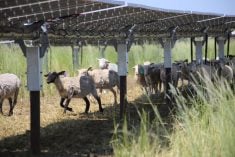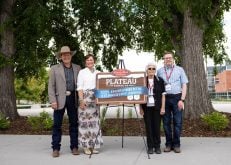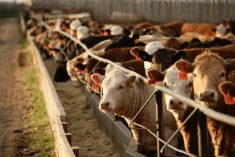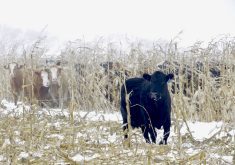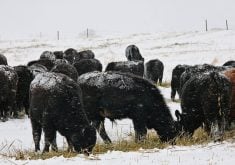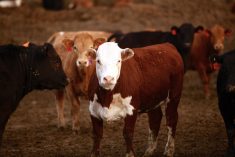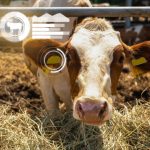Many farmers fear the effort to reduce greenhouse gas emissions is going to cost them money.
But a new federal program may assist livestock producers in upgrading to a grazing system that advocates say is more profitable and makes ranches more resilient.
The federal government wants more cattle producers to adopt rotational grazing and is making it one of the centrepieces (along with cover cropping and more efficient nitrogen use) in its $200 million On-Farm Climate Action Fund.
That’s a bonus for a practice that has already proven its worth, say grazing experts.
“Rotational grazing is light years ahead of continuous grazing, which is just turning animals out in one big area,” said Bart Lardner, a professor at the University of Saskatchewan.
Research has shown rotational grazing not only produces more forage per acre but also more nutritious forages and that, in turn, lowers methane emissions from cows, he said.
“A good grazing system that is thought out to provide adequate rest for those forage species at the same time provides high-nutrient value feedstuff to the grazing animal,” said Lardner.
“There’s no doubt that many studies show that high-quality diets reduce production of enteric methane.”
And reducing this type of methane emissions (enteric means from the gut of ruminants) is something producers need to embrace because it isn’t just a government preoccupation, said Cedric MacLeod, a New Brunswick rancher and executive director of the Canadian Forage and Grassland Association.
“As primary producers, we’re seeing it from a number of levels, both political and operational on the business side,” said MacLeod. “These value chain players are making commitments to their consumers, and there’s only one way to achieve that and that’s through on-farm action.
“We’ve got to deliver a reduction in greenhouse gas emissions. This is the kind of path they’ve chosen.”
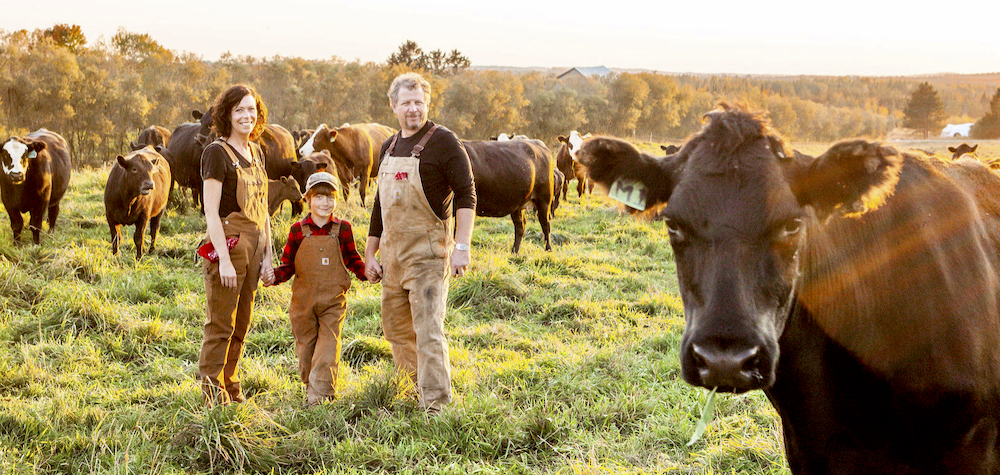
Specifics about the On-Farm Climate Action Fund haven’t been announced as Ottawa hasn’t yet chosen the “delivery partners” that will run specific programs. (The call for proposals only closed in late September.)
The program might see subsidies for capital costs (most of which are for fencing and watering systems). But it is the management part that is most daunting for many producers, said Lardner.
“The take-up of adoption of it is challenging — it’s a time commitment,” he said, adding each farm needs to take a tailor-made approach. “Many operations are multi-enterprises. Is it straight cattle or cropping? Do they have another operation on that farm or ranch?”
Producers need to first consider the right stocking rate, intensity, frequency, duration and timing, and then create a setup to allow that.
“When you want to set up a rotational system, you have to think about fencing, you have to think about waterways, you have to think about alleys,” he said.
Those sorts of challenges may be the reason why the number of producers using this system is low.
“The Census of Agriculture will suggest that rotational grazing is deployed on about 25 per cent of beef farms,” said MacLeod.
But the term is not clearly defined and the true number is much lower, he added.
“Active rotational grazing management is at about five per cent in Canada,” he said.
But the payoff is worth the effort, both men said.
In certain areas of the country, rotational grazing could boost forage productivity by 25 to 50 per cent, although in many parts of the Prairies it might only be 10 to 15 per cent.
But that’s still a sizable boost, said MacLeod.
Studies have shown a rotational grazing system produces more pounds of beef per acre than a continuous grazing system, added Lardner. They have also found soils stay moister in a rotational grazing system and the pastures are more resilient, he said citing one of his students who ranches near St. Brieux (northeast of Saskatoon) who was hit by the severe drought last summer.
“He didn’t run out of pasture,” he said. “He could get in there and get off and allow some rest. It goes a long way. You leave litter and your soil health is better, and the hoof impaction is there.
“All of these things are improving the resource — the soil — at the same time as trying to reduce enteric emissions.”
Some of the research Lardner and his team are working on right now is on integrating different crop types, specifically legumes, to reduce emissions further.
And while the number of active rotational grazers is still low, many are enthusiastic advocates who are both refining management systems and spreading the word about its benefits. Many are in Alberta, said Lardner, who started his academic career in the province (at the old Fairview College). He pointed to the Foothills Forage & Grazing Association, Peace Country Beef & Forage Association and other farmer-led research groups in the Agricultural Research and Extension Council of Alberta (ARECA). The Canadian Forage and Grassland Association has been trying to encourage wider adoption and works with groups such as ARECA and provincial forage councils, said MacLeod.
“The other groups that we’ve started to engage a lot more with is the conservation community,” he said. “Watershed groups are doing a lot of good work around watershed management and fencing infrastructure and are key partners in these kind of projects.”




